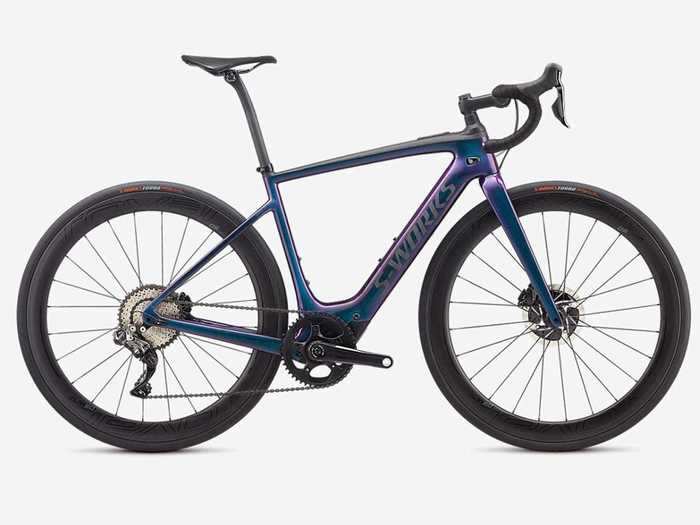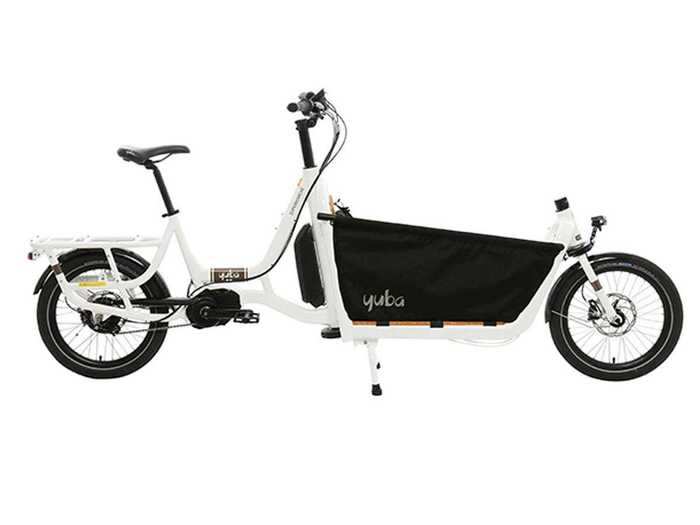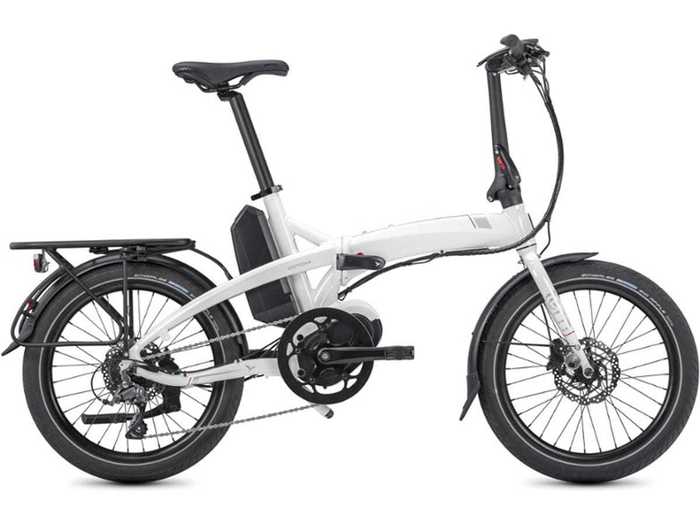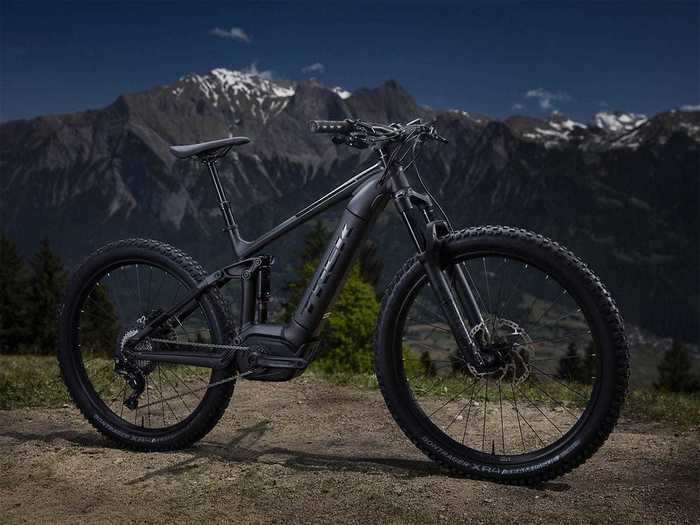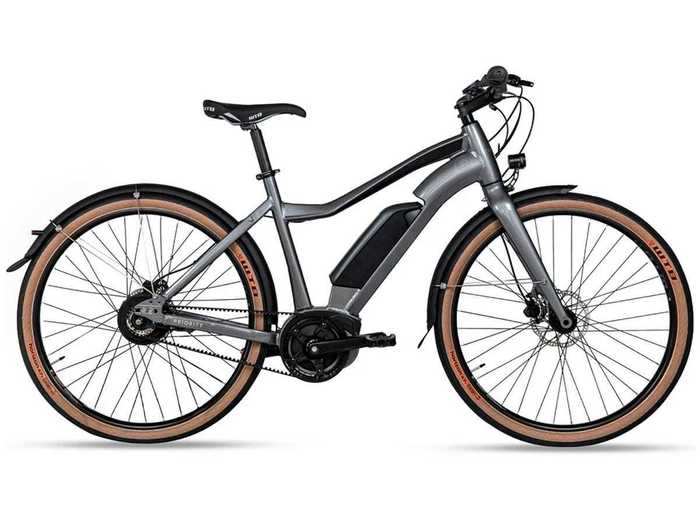- E-bikes continue to disrupt the commuting industry and have made urban transport easier, greener, healthier, and faster.
- Most e-bikes offer either a pedal-assist function that kicks on a motor after a rider completes a few pedal rotations or a throttle-assist in which it features a dedicated accelerator capable of powering the bike with or without rider pedaling.
- Like non-motored bikes, there are many different types of e-bikes including electric commuters, electric mountain bikes, and electric road bikes, as well as compact, folding models.
- Our top pick, the Priority Embark, wowed us thanks to its wide, grippy tires, smooth ride, and the fact it needs hardly any routine maintenance to keep it running in top shape.
Over the last several years, electric bikes (referred to as e-bikes) have taken the cycling industry by storm. By attaching a motor and a battery to a bike, companies have been able to deliver the ultimate in two-wheeled transportation. Benefiting commuters, mountain bikers, road bikers, and city cruisers alike, e-bikes shifted the way people get from point A to point B.
Despite criticism from traditional cyclists, there's no denying the positive impact e-bikes have on the environment as more people ditch gas-guzzling cars in favor of battery-powered bikes. Because of this, it appears as though this new mode of transportation hasn't just arrived but is here to stay.
Thanks to its dramatic rise in popularity, there are hundreds of e-bike models a simple Google search away. But fret not — we've done enough pedal-testing to find the best of the bunch, no matter if you prefer ripping down singletrack mountain bike trails or a leisurely weekend jaunt downtown.
Though the term ebike refers to an entire industry, the bikes vary. Some are built for commuting while others are designed for mountain or road biking. Nearly all have one thing in common: pedal-assisted power. After freely pedaling two to three revolutions, most bike's motors kick in with a soft(ish) push, accelerating the bike and adding to the power output by the rider.
Depending on its selected level of assistance — some offer everything from minimal to extreme pedal-assistance — the bike's ultimate top speed may vary from roughly 8 to 10 miles per hour on up to around 30 miles per hour. Some models even feature a throttle option, giving riders the ability to ride the bike in a similar fashion as a motorcycle; just not as fast, of course.
As is the case with any bicycle, moped, or motorcycle, however, wearing a protective helmet is highly recommended no matter the use case.
E-bike basics
There are a few terms you'll want to know before buying an e-bike. First, hub-drive bikes have the motor in the hub whereas mid-drive bikes house the motor in its frame. Mid-drive bikes have a few advantages over hub drive versions, as well. Those advantages are:
- They apply power through the chain, so they feel and steer like a standard bike.
- They utilize the bike's gears similarly to how a rider would, applying power when needed.
- These kinds of bikes also require a lower absolute power since they have the ability to use gearing to climb hills (whereas hub drive bikes deliver power at the hub and can't use the bike's gearing. This means they tend to have high-powered motors in order to generate enough torque to climb hills).
Power, or wattage, is also something you'll notice often when shopping for an ebike. These refer to the amount of force a motor is able to put out over time. Think of it like a car's horsepower rating.
A bike's range is the total distance a bike can travel on a single battery charge. Do keep in mind that any range displayed either on the bike itself or via a companion app is a general estimate.
There are many factors capable of impacting an e-bike's range, including the amount of power exerted by the bike, whether it needs to climb steep hills, and other ride-specific variables. Most (if not all) ebikes are still able to function without the motor running, though due to the weight of the on-board battery, they'll feel extremely heavy.
Here are the best e-bikes currently available:
- Best e-bike overall: Priority Embark
- Best electric mountain bike: Trek Powerfly FS7
- Best folding e-bike: Tern Vektron D8 Folding E-Bike
- Best lightweight e-bike: Yuba Electric Supermarché
- Best electric road bike: S-Works Turbo Creo SL
Updated on 4/17/2020 by Rick Stella: Updated the intro copy to include more e-bike basics, checked the availability of the selected bikes, and updated the prices, formatting, and links of each pick.
Read the original article on
Insider
The best electric road bike
The
Specialized S-Works Turbo Creo SL offers incredible range and the promise to bring true road bike feel and performance to an e-bike.
Specialized launched its top-end S-Works Creo SL by having its Tour de France pros ride it on their rest day — and that's exactly the market it's aimed at. The Creo SL is designed to look and feel like a very high-end road bike ridden by a fit rider. It features up to 240 watts and 35Nm of both peak and sustained power up to 28mph, as well as a range of up to 80 miles.
Unlike other brands, Specialized designed its own motor, along with a built-in proprietary battery and controller. This means you should be good for warranty issues during the two-year coverage period, so long as you're near a Specialized dealer.
An external 160Wh Range Extender, which fits in any normal water bottle cage, offers an additional 40 miles of range, and comes with all S-Works builds of the Creo SL. Other intriguing features include its 26-pound weight (which is extremely light for an e-bike), a companion app that allows the bike to adjust to your ride style, and a future shock damper (carried over from the Roubaix line for a comfy ride).
The ease of use of the above-mentioned range extender is a game-changer, too. Simply dropping the extender into a water bottle cage to gain 40 additional miles of range would allow Creo users to take on long training rides, or up to a 60 mile each way commute.
Pros: Feels and rides like a racing bike
Cons: Costs as much as a car
The best lightweight e-bike
There is no mistaking this bike for your average push bike, as it's designed to do things a standard pedal-powered bike just can't.
Though Yuba's Electric Supermarché might cost as much as a dingy minivan, it can do almost as much. From running to school or the office to taking care of shopping or picking up a keg for a get-together, there's no task the Supermarché isn't a fit for.
The Supermarché gets its odd look from Dutch barrow bike design which puts what you're hauling in front of you. This lowers the center of gravity and allows you to keep whatever cargo you're hauling under a watchful eye as you commute. The clever step-through design allows you to mount and dismount without having to balance the bike's load, too.
With a Bosch motor and a 55-mile range, as well as hydraulic brakes and a useful walk mode to help you push the bike, you should be able to get through just about any daily errand. The folks at Yuba have even thought about many of the issues that commuters face. Do you live somewhere wet? There's a rain canopy available. Need to strap in your kids? There's a seat kit.
Its cleverly designed cable steering, quality construction, and well thought out accessories make it a stand out in a crowded field of electric cargo bikes. Riding the Supermarché was much more fun than expected. Thanks to the long-range and huge hauling capacity, I was able to almost entirely ditch my car while testing.
The Supermaché does everything a small car does except pollute and get stuck in traffic and, for me, that makes it the best choice for families.
Pros: Incredibly practical for large loads and families
Cons: Getting this thing up stairs is a serious workout
The best folding e-bike
The
Tern Vektron D8 combines the convenience of a folding bike with the ease of an e-bike.
Folding electric bikes make a lot of sense. They're easy to store in small urban apartments, they integrate well with mass transit, and unlike regular folding bikes, they aren't a disaster to ride uphill.
The problem with electric folding bikes is that so many of them are awful. They're either underpowered, overweight, totally impractical, or a healthy mix of all three. Luckily, Tern used decades of experience making some of the world's best folding bikes to produce an electrified folder called the Vektron D8.
Featuring hydraulic disc brakes, racks, a highly adjustable fit, and a 50-mile range, the Vektron is designed as a city commuter. Easy to ride, easy to haul, and easy to store.
The Vektron folds down into a package small enough to store in a large locker and, thanks to a clever design, it rolls on its rear wheel when folded. Given its 49-pound weight, this is extremely helpful.
With a mid-drive motor and variable pedal assist, the Vektron quickly speeds up to 20mph but doesn't feel lurchy or jumpy (like some hub drive e-bikes). Tern designed the Vektron from the ground up as an e-bike, allowing it to avoid suffering from the flex or wobble that impacts other designs.
The Vektron fits riders from just over 5 feet tall to 6'5" thanks to adjustability in the saddle height, bar height, bar reach, and bar angle.
Pros: Lightweight and easy to store
Cons: Lacks the stability of larger bikes at high speed
The best electric mountain bike
Trek's Powerfly FS7 has the travel necessary to get down the gnarliest of trails and thanks to a powerful Bosch motor, more than enough power to get back up.
The problem with long-travel mountain bikes is that they're always a compromise on bigger days, forcing you to pick between the travel you need to get down a trail and a bike that's lightweight enough to get back up again. This is where long travel electric bikes really shine, affording you the ability to ride down technical trails while making the ride up a breeze.
Trek's Powerfly FS7 is a mountain bike with a motor, as opposed to a refashioned and underpowered motocross bike. With 150mm of travel in the rear and 160mm in the front, it's a highly capable bike built to tackle black diamond trails. With semi-fat tires, a big travel e-bike specific fork, and downhill disc brakes, this bike goes anywhere and lets you feel comfortable and in control.
The bike weighs 50lbs, which I easily felt while trying to flick it around like a bike half the weight. After a few runs, I grew accustomed to the weight of the Powerfly and enjoyed how nice of a ride it delivered (the motor made climbing hills incredibly easy, too).
Trek's side-loading battery is less exposed to mud than other down tube batteries, which is a real bonus for anyone riding in extremely muddy areas. Some bikes can get so encased with mud that the battery is nearly impossible to remove.
The Powerfly offers a wide range of available mileage, depending on which mode you choose. Its lowest mode (Eco mode) offers a range of up to 100 miles, while its Turbo mode tops out at 37 miles. Depending on how much switching you do between each mode ultimately determines the range you're able to expect.
Thankfully, this model takes much of the thinking out of motor management as it seems to always give you the right amount of assist without lurching on the flat or creeping on the climbs. At first, I found it annoying that I couldn't easily adjust the motor but I ended up just leaving the bike in Bosch's eMTB setting most of the time and never felt too disadvantaged.
Pros: Responsive geometry and real off-road components
Cons: If you do happen to run out of battery halfway up trail, it's going to be a hard ride to the top!
The best e-bike overall
The
Priority Embark rides great, requires almost no maintenance, and would make a perfect car replacement.
Editor's note: According to Priority's site, all sizes of the Embark e-bike are on backorder until May 31.
Of all the bikes tested, Priority's Embark shocked me the most. It's a mid-drive commuter built with practicality in mind. Thanks to wide, grippy tires and hydraulic disc brakes, I was tempted more than once to take the off-road route. But while it likely would've been fine, the bulk of the Embark's work is to be done on pavement — and it does that very well.
If someone asked me to build the ideal e-bike, this is the model I'd come up with. For starters, maintenance is a breeze (and largely non-existent). If you can put air in tires, you can handle a bulk of the maintenance needed. Thanks to low-maintenance hydraulic disc brakes, the clever use of internal gears which takes away a derailleur, and a grease-free carbon belt drive, there's little else to go wrong other than a potential flat tire.
If you intend to use an e-bike as a car replacement, the Embark is a great solution, too. Not only is maintenance easy, as mentioned, but it's also a joy to ride. The comfortable saddle, wide handlebar, and upright geometry make for a smooth, nimble ride no matter if you're navigating city traffic or taking the scenic route through the park.
Component-wise, the Embark uses a Bosch motor, Bosch head unit, and Bosch battery. Unlike bikes which mix components, using one system means that warranties and servicing are (mostly) simple. With a 50-mile range, the Embark offered more than enough in the tank to cover my commuting needs — I found I mostly used the 2nd and 3rd of the 4 assist settings, though. If you're intent on using the fourth, or live in a hilly area, you likely won't get the full 50 miles between charges.
What really sets the Embark apart is the service as Priority sends the bike with a mechanic to your home. The mechanic sets the bike up for you, explaining how to charge and maintain it, and ensures you're completely ready to go before leaving. This is the sort of service other bike companies should aspire to.
This bike allowed me to do nearly everything a car would at a much lower cost. Perhaps the lone nitpicks are that the included front light could be better and its fenders sometimes rub. If I was looking for an urban mobility solution, I wouldn't think twice about buying the Embark.
Pros: Low maintenance and reliable motor system
Cons: Sometimes the fenders rub

